Slow Cooker vs Dutch Oven: A Conversion Guide
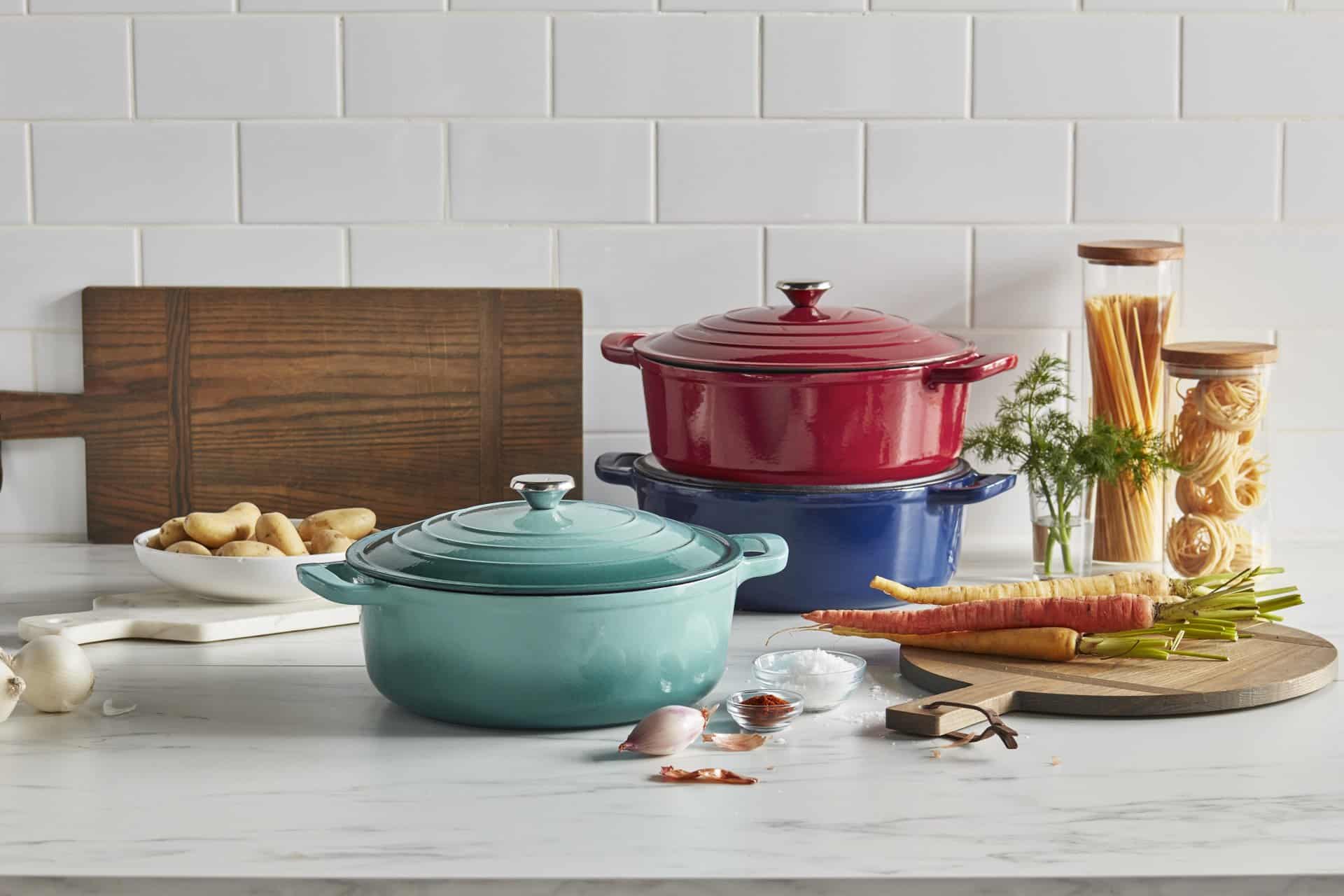
From hearty soups to rich stews, braised meats and pot roasts, there’s something extra soul-soothing about letting ingredients simmer and meld, transforming into culinary comforts that always sound perfect for a chilly fall night.
Both slow cookers and Dutch ovens excel at this slow-paced magic, but what happens when you want to break out your Dutch oven and only have a slow cooker recipe at hand, or vice versa? Before you abandon hope or rush to the store, know that transitioning recipes between these two beloved cooking vessels is easier than you think.
In this article, discover the nuances of each tool and learn how you can seamlessly interchange your favorite cozy recipes from slow cooker to Dutch oven, and back again.
Hungry for more? Shop our extensive collection of Dutch ovens, from top brands like Le Creuset, Staub and even Sur La Table!
What’s the difference between a slow cooker and a Dutch oven?
At a glance, both slow cookers and Dutch ovens seem to champion the art of low and slow cooking. But when it comes down to the details, these two popular kitchen tools diverge in design, function and sometimes even in the results they deliver. Here’s a few key differences between the two:
Design and material
- Slow cooker: An electric countertop appliance typically made of a metal outer shell with a ceramic or porcelain inner pot. It has a glass or plastic lid.
- Dutch oven: A thick-walled pot, often crafted from cast iron (either enameled or bare). It boasts a tight-fitting, heavy lid, and the entire vessel is oven safe.
Heating mechanism
- Slow cooker: Uses electricity to generate heat, typically from the base, surrounding the food with a gentle, consistent warmth.
- Dutch oven: Can be used on a stovetop or in an oven. The cast iron retains and distributes heat evenly, making it suitable for both searing and slow cooking.
Functionality and versatility
- Slow cooker: Used primarily for slow cooking dishes over extended periods. Most models have settings such as low, high and keep warm.
- Dutch oven: Used for a variety of cooking methods, such as sautéing, frying, braising, baking and even roasting. It’s suitable for both stovetop and oven use, offering a broader range of culinary possibilities.
Moisture retention
- Slow cooker: The lid usually remains closed during cooking, promoting condensation and ensuring dishes remain moist.
- Dutch oven: Its heavy lid also seals in moisture, but being used open on a stovetop for frying or sautéing means it works for a variety of cooking techniques—not just moisture-rich ones.
Flavor development
- Slow cooker: Excellent for melding flavors over prolonged cooking. However, it doesn’t allow for the browning of meats or caramelization of ingredients unless done in another pan first.
- Dutch oven: Its ability to sear and brown ingredients directly in the pot before transitioning to a slow cooking phase can create a depth of flavor in one vessel, adding layers of complexity to a dish.
Ease of use
- Slow cooker: Often hailed as a “set it and forget it” tool, making it suitable for those who wish to prep their meal, leave it and come back hours later to a cooked dish.
- Dutch oven: Requires a bit more hands-on attention, especially if you’re utilizing it for various cooking methods in one recipe.
Can a Dutch oven be used as a slow cooker?
The short answer: absolutely! But with a few adjustments to your slow cooker recipe.
To use an oven as a substitute for a slow cooker, you’ll need to make a few tweaks to the temperature, cook time and even the amount of liquid you’ll need. You’ll also need to understand how each appliance operates. Here’s a breakdown:
- Temperature adjustments
Slow cookers generally operate between 190°F (on the low setting) and 300°F (on the high setting). In comparison, when using an oven as a slow cooker, you’ll typically set the temperature between 325°F (similar to the low setting) and 375°F (resembling the high setting).
- Cookware considerations
Opt for a heavy, oven-safe pot with a tight-fitting lid, like a Staub or Le Creuset Dutch oven, to mimic the moisture retention of a slow cooker. This ensures even heat distribution and prevents excessive drying out.
- Moisture management
Slow cookers are designed to trap moisture, leading to a self-basting environment. Ovens can cause more evaporation, so it’s essential to occasionally check your dish. If it seems to be drying out, you may need to add a little more liquid.
- Cooking time
Oven cooking is often faster than slow cooking. As a general rule, a dish that takes 6–8 hours on a slow cooker’s low setting might only need 2–3 hours in the oven at 325°F. Always check for doneness earlier than the original recipe suggests, especially if you’re converting for the first time.
Advantages of Oven Slow Cooking
One significant advantage of using a Dutch oven is the ability to sear or brown meats directly in the pot before the slow cooking phase, adding layers of flavor. Additionally, the even heat distribution in oven slow cooking can sometimes result in a more consistent texture and doneness, especially for larger cuts of meat.
How to Convert Slow Cooker Temperatures to Oven or Stovetop Temperatures
While the slow cooker provides a unique “set and forget” mechanism for slow, prolonged cooking, there are occasions when you might want to replicate a slow cooker recipe using an oven or stovetop.
To achieve comparable results, it’s essential to understand how the temperatures translate. Here’s a helpful guide:
Conversion to Oven
The low setting of a slow cooker ranges from 190°F to 200°F. To mimic this in an oven, set your temperature to approximately 325°F. The high setting of a slow cooker ranges from 290°F to 300°F; in oven terms, this is roughly equivalent to 375°F.
Conversion to Stovetop
If a slow cooker recipe calls for a low setting, this would be similar to a “simmer” on most stovetops, where you see occasional small bubbles rising to the surface but not a rolling boil.
To mimic the high setting of a slow cooker, use medium heat on the stovetop, where you maintain a consistent but controlled boil or cooking level.
Additional Conversion Considerations
Duration: Remember, cooking on an oven or stovetop might require a shorter duration than a slow cooker. It’s crucial to check for doneness regularly, especially the first time you’re converting a recipe.
As a rule of thumb:
- 6–8 hours on “low” in a slow cooker usually takes about 2–3 hours in a Dutch oven at 325°F.
- For a slow cooker recipe that calls for 3–4 hours on “high,” this translates to about 1–1.5 hours in a Dutch oven at 375°F.
Moisture: Ovens and stovetops can cause more evaporation than slow cookers. When converting, you may need to adjust the liquid content or cover your pot or dish to retain moisture.
Searing and browning: An advantage of using an oven or stovetop (especially with a Dutch oven) is the ability to brown or sear meats directly, enhancing flavor. If a slow cooker recipe doesn’t have this step, consider incorporating it for added depth.
How to convert Dutch oven recipes to your slow cooker
Converting a Dutch oven recipe to a slow cooker can allow you to enjoy your favorite dishes with a little extra convenience. Here’s a step-by-step guide to help you make the switch:
Liquid adjustment
- Reduce the Liquid: Slow cookers are very efficient at retaining moisture, leading to less evaporation than Dutch ovens. If your Dutch oven recipe calls for a lot of liquid (like a braised dish), consider reducing the liquid by approximately 1/3 when using a slow cooker.
- Avoid Overfilling: Ensure that your slow cooker is not more than 2/3 full to allow for optimal cooking and prevent overflow.
Temperature conversion
Dutch oven recipes often require a cooking temperature of around 325°F to 375°F in an oven. In a slow cooker, this translates roughly to the low and high setting, respectively.
Duration adjustment
As mentioned, 2–3 hours in a Dutch oven generally equates to 6–8 hours on low or 3–4 hours on high in a slow cooker. Additionally, 1–2 hours in a Dutch oven usually translates to 4-6 hours on low or 2–3 hours on high in a slow cooker.
Searing and browning
Many Dutch oven recipes start by browning or searing meat.
When converting to a slow cooker, you can still brown the meat in a separate pan on the stovetop before adding it to the slow cooker. This step, while optional, can add depth to the flavor.
Layering ingredients
In slow cookers, it’s often recommended to place harder, longer-cooking vegetables (like carrots and potatoes) at the bottom, where they’ll be closer to the heat source, and then layer meats or softer vegetables on top.
Herbs and spices
Some spices and herbs can become more pronounced in flavor over the extended cooking times typical of slow cookers. Consider adding delicate herbs or spices towards the end of cooking to retain their fresh flavor.
Check for doneness
Since slow cookers can vary in their heating intensity, always check for doneness towards the end of the suggested cooking time. Meats should be tender, and vegetables should be cooked through.
Remember, converting recipes between cooking methods may require some trial and error. Use these guidelines as a starting point, but trust your instincts and knowledge of your appliances. Adjust as necessary based on your observations and the specific requirements of the dish.
Hungry for more? Shop our extensive collection of Dutch ovens, from top brands like Le Creuset, Staub and even Sur La Table!

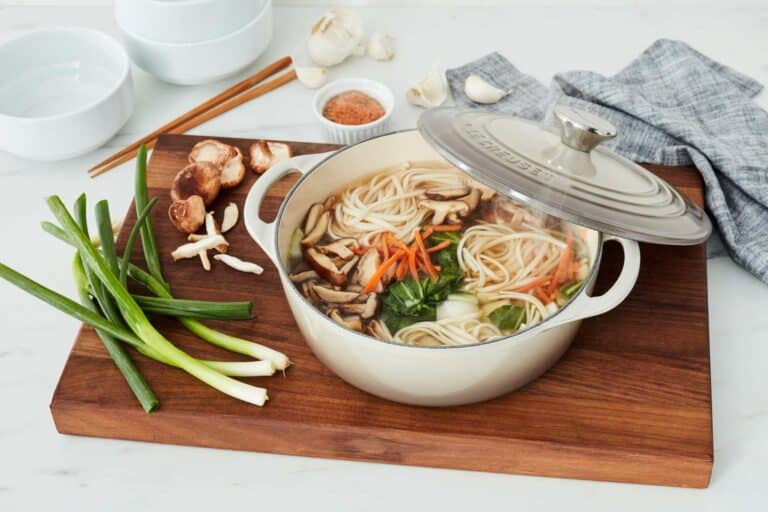
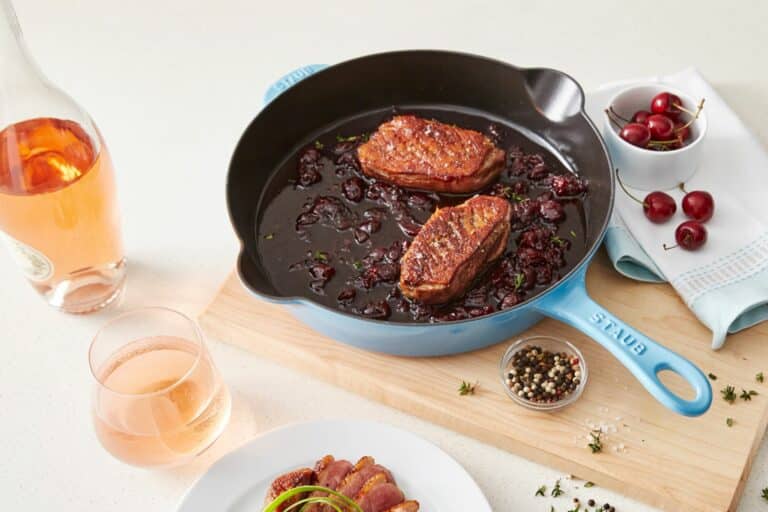
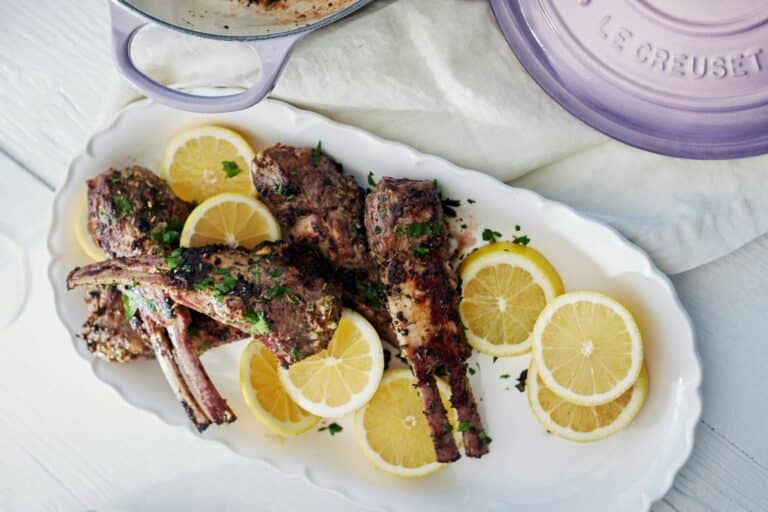
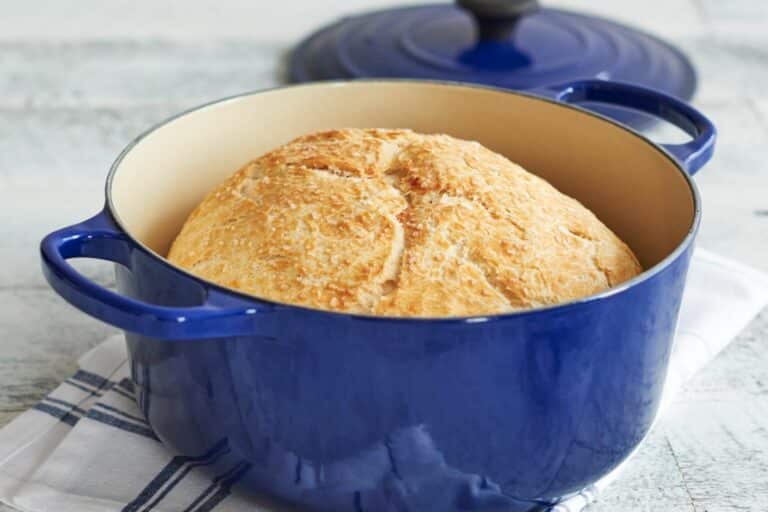
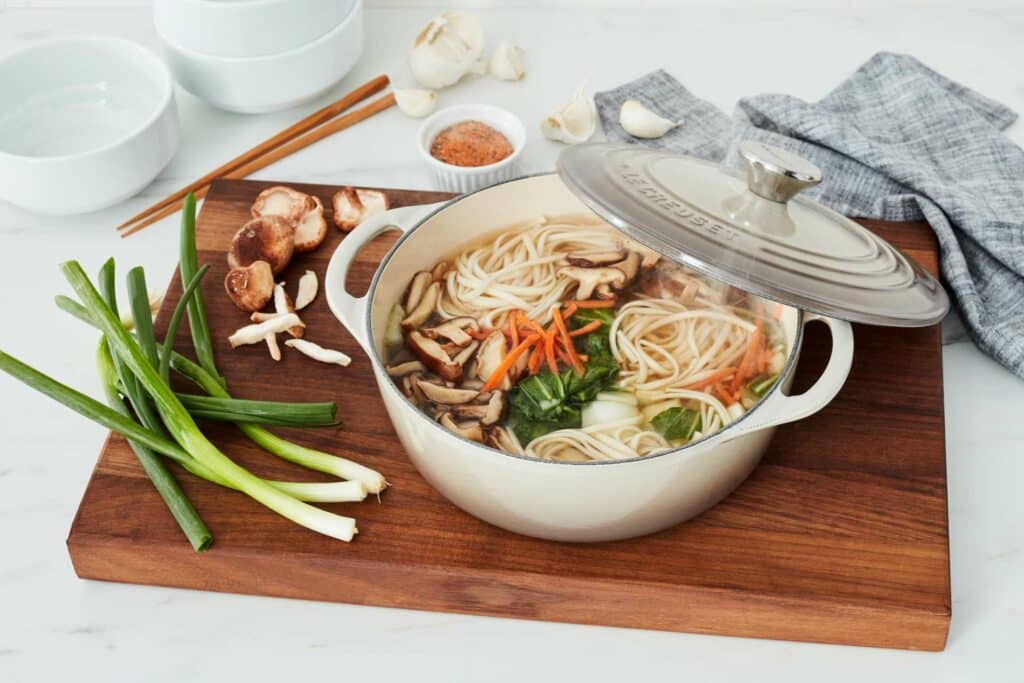
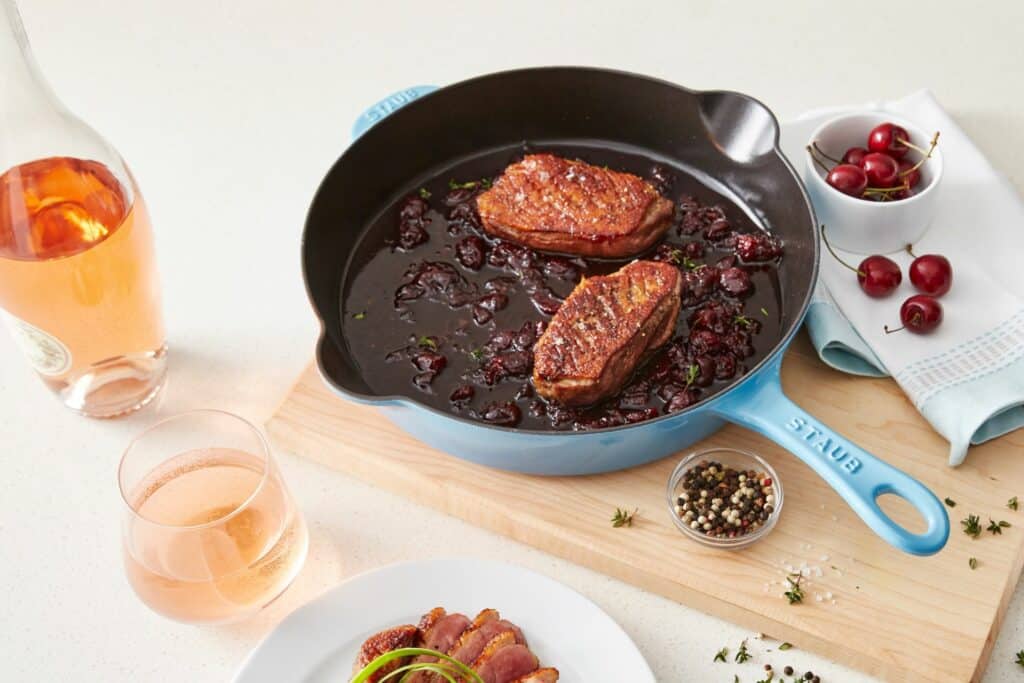
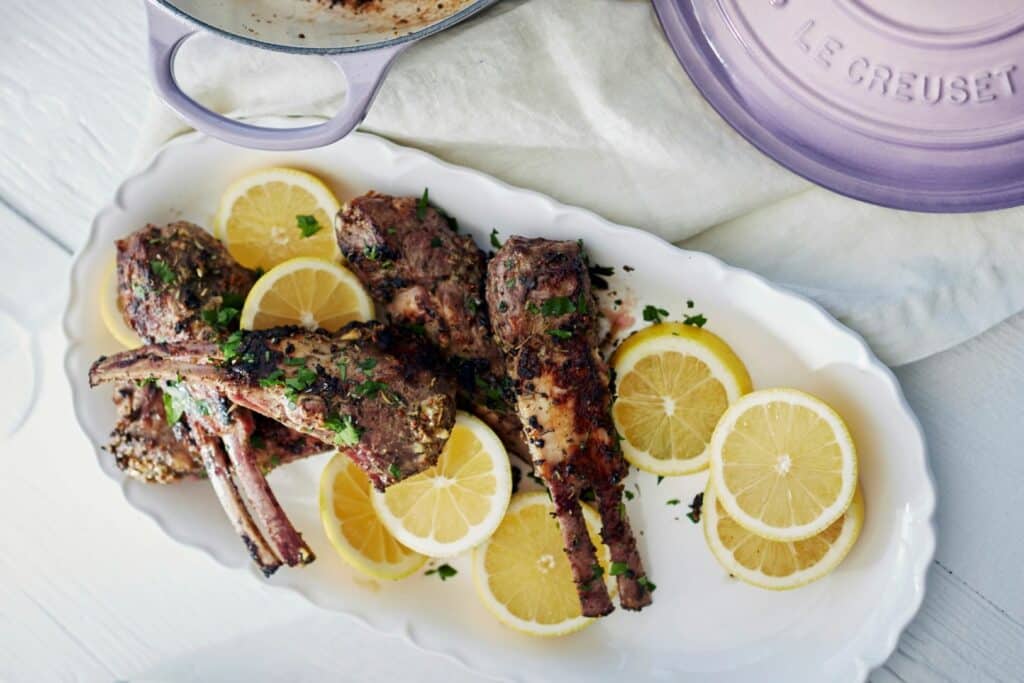

JOIN THE CONVERSATION